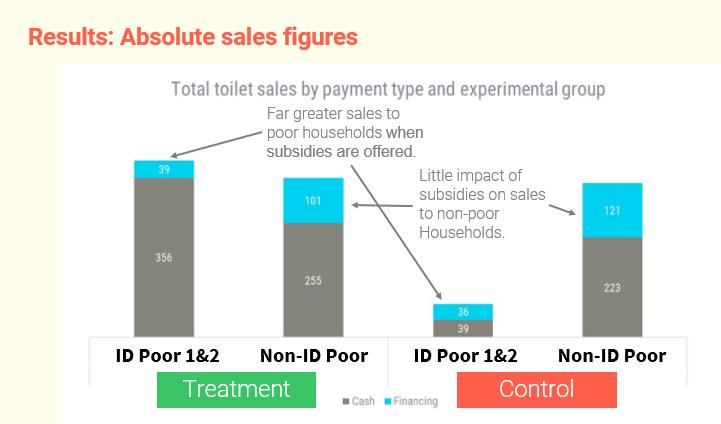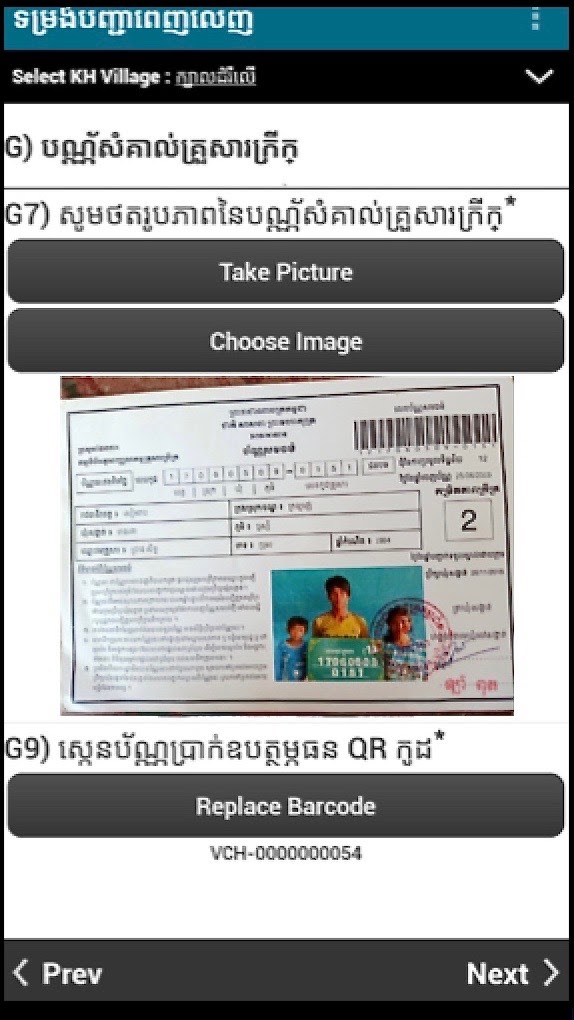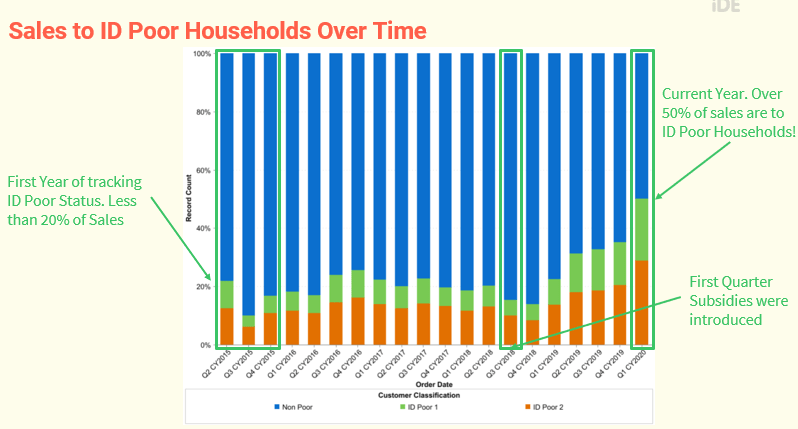
Search
A variety of techniques are used to market goods and services to base of pyramid consumers in hopes of lowering the barriers to purchasing for the poor in remote areas of emerging markets. They include subsidy vouchers that offer product discounts, product giveaways and improving sales agent network performance.
TaroWorks client International Development Enterprises (iDE) – a market-oriented development organization – uses TaroWorks’ mobile offline field services app and Salesforce.com to help manage its Cambodia WASH program, which uses its market-based approach to promote, sell and distribute latrines to base of pyramid consumers, by coordinating sales agents’ sales with individual latrine builders. (Read More)
Since 2009, iDE has helped sell more than 330,000 latrines reaching over 2 million people and generated an annual household benefit of around $83, according to Daniel Clark, the Information Systems Developer at iDE. Speaking during a recent TaroWorks webinar, Dan said the base of pyramid marketing efforts eventually reached a turning point. Since the program’s inception, iDE has seen latrine coverage across the provinces rise to around 70%. However, iDE recognized that the program wasn’t reaching enough of the poorest market segment.
Dan said customers classified as poor were often unable or unwilling to pay full market price for a high-quality latrine. The Cambodian Government uses the “ID Poor” system to categorize households into 3 main categories, allowing iDE to easily test the impact of subsidies on uptake. So, iDE tested the concept of providing subsidies through random control trials (RCT) by offering latrine customers discount vouchers for the product using TaroWorks and Salesforce to issue and track the subsidy vouchers. When the customer presented the voucher at the point of purchase, it reduced the cost of the latrine.
The results of the trial in terms of sales figures indicated far greater sales to poor households when voucher subsidies were offered, compared to when they were not.

iDE’s takeaways from their research into subsidies were:
The process iDE designed for issuing and tracking voucher discounts for latrine purchases has four steps:
Watch the full webinar recording as Dan goes into more detail about these steps and how various stakeholders coordinate with each other.
The journey of the discount purchase voucher from headquarters to the local sanitation finance coordinator to customer and then to the latrine manufacturer who fulfills the order began and was tracked at each of its steps using TaroWorks.
To get the project up and running quickly, iDE utilized G-Connector, which is a Google Sheets add-on that allowed them to batch create new voucher records. An iDE finance officer then added three pieces of information to the spreadsheet for each voucher: the batch number, the name of the iDE team member in charge of the particular batch of subsidy vouchers and finally a standard digital voucher code number.
The Google Sheet was then synced automatically back to Salesforce using G-Connector. Now that the subsidy vouchers were officially created, an iDE finance manager could close the loop by reaching out via phone, email or text to let staff in provincial offices know the vouchers had been created.
Each province office then prints the subsidy vouchers, which include a QR code for future quick reference. Personnel assigning the paper voucher to the next person in the chain use TaroWorks to scan the paper QR code, and pass it on (in this case to a field agent). This process and tracking creates a digital chain of accountability so sales agents don’t need to worry about errors created when entering data by hand or updating the status of the voucher as it travels to the customer – since that status is updated automatically.
When all QR codes are entered using the mobile app, the information is synced to the Salesforce cloud database and recorded as a completed step. The next person along the voucher’s path can then download this information to their device and repeat the process described above until the voucher has been moved through each stage to reach its final destination.
The subsidy vouchers are then awarded to potential customers by the sales team based on need. TaroWorks is also used to verify the individual customer’s Cambodia Poverty ID to ensure they qualify for the product discount by taking a photo of the ID using the TaroWorks app.

The last step in the process after leaving the customer stage is when an iDE staff member assigns the order to one of the latrine manufacturers after the paper voucher has been submitted by the customer. The sanitation finance coordinator is then notified of the impending latrine delivery and updates the status of the order in Salesforce, confirms the delivery with the customer directly when that occurs and updates the status of the digital voucher record as redeemed.
The program management team takes reporting very seriously, Dan said, and focuses on efficiency and process improvement by regularly utilizing the data uploaded from TaroWorks to Salesforce to take action based on results and trends reflected in Salesforce dashboards.
Through Salesforce’s reporting function, the team is able to stay on top of all aspects of the voucher process like using a “voucher redeemed report” to see what iDE has paid out. In that case, it’s been around $200,000, Dan said, who added that such data also allows iDE’s finance team to forecast future cash outflows
An “order status versus voucher report” also allows iDE to look at the program’s progress in meeting the goal of increasing the number of people identified as poor by the Cambodian government who are able to purchase a latrine using the digital voucher discount.
By tracking their sales using Salesforce dashboards, iDE can see that prior to the digital voucher program starting in 2018, 20% of overall sales in 2015 were made to ID Poor consumers. Since the voucher program launched, 30% of all sales in 2019 were to poor customers, and has continued to rise to over 50% in 2020.

Dan ended his webinar presentation with a few lessons learned from the voucher program:
POST TOPICS
PREVIOUS POST
Sign up to receive emails with TaroWorks news, industry trends and best practices.
TaroWorks, a Grameen Foundation company.
Site by V+V